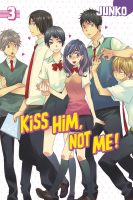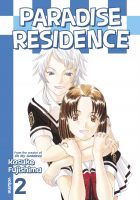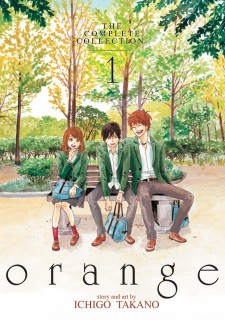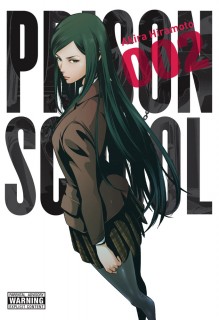My News and Reviews
Last week at Experiments in Manga I announced the winner of the Summer Spookiness manga giveaway. The post also includes some of the manga available in English that incorporate Japanese folklore, ghosts, or urban legends in some way. Otherwise, it was a rather quiet week except for the fact that on Friday evening I discovered that the room I was storing a bunch of my books in had flooded thanks to a broken radiator pipe. So, a fair amount of my Friday night and weekend was spent on recovery efforts and assessing the damage. All things considered, I came out of the whole thing pretty well. Although I did lose some material, and it was heartbreaking, I was able to save the majority of the books. (I’m really glad I took the preservation and conservation class during library school!) Fortunately, only two of the severely damaged books were truly irreplaceable. One is just about dry enough now that I can start to try pressing it back into shape and the other is currently in the freezer. They won’t necessarily be pretty, but they should still be readable when I’m through.
Anyways! On to the licensing news and announcements made during the final days of Anime Expo: Among other things, Kodansha Comics revealed the details behind the new Eternal Edition of Naoko Takeuchi’s Pretty Guardian Sailor Moon, confirmed the print edition of CLAMP’s Cardcaptor Sakura: Clear Card, and announced Yukito Kishiro’s Battle Angel Alita: Mars Chronicle. (Kodansha is also continuing its trend of calling manga digital-first with no real indication that a print edition will ever emerge.) As for Kodansha’s sister company Vertical Comics, we have City by Keiichi Arawi, Moteki by Mitsuro Kubo, Strangulation by Nisioisin, and My Boy by Hitomi Takano to look forward to. Seven Seas announced a number of manga and light novels, too: Ryo Shirakome and Takayaki’s Arifureta; Yuu Kamiya, Tsubaki Himana, and Sino’s Clockwork Planet; Eiichi Shimizu and Tomohiro Shimoguchi’s Getter Robo Devolution; Akihito Tukushi’s Made in Abyss; Coolkyoushinja and Mitsuhiro Kimura’s Miss Kobayashi’s Dragon Maid: Kanna’s Daily Life; Kina Kobayashi’s Nameless Asterism Shoutarou Tokunou’s New Game; the continuation of Ichigo Takano’s Orange; Yuyuko Takemiya and Yasu’s Toradora; and Nozomu Tamaki’s Soul Liquid Chambers. Also, Udon Entertainment plans on publishing the Daigo the Beast and Infini-T Force manga. (Still waiting for Udon’s Rose of Versaille and Sugar Sugar Rune to make an appearance, though.)
Quick Takes
 Boy, I Love You edited by Kou Chen, Emily Forster, and Eric Alexander Arroyo. I had the delightful opportunity to meet the editors and a few of the other contributors of Boy, I Love You while at TCAF, but as one of the anthology’s Kickstarter backers I was well-aware of the anthology before that and was greatly looking forward to its release. The volume brings together six comics and one illustrated prose story by seven different creators, all of which take inspiration from the more wholesome aspects of the boys’ love genre. It’s a delightful collection with an appealing range of stories, everything from slice-of-life to mecha space battles. If I had to choose a favorite (which is difficult to do because all seven contributions are honestly great) it would probably be Forster’s “Mix Plate” which incorporates themes of family and food along with the comic’s central romance. The focus of the stories in Boy, I Love You is primarily on relationships and how the characters’ navigate them and their feelings. While as a whole the anthology is fairly chaste–the physical closeness that’s shown between the men is largely limited to a few kisses and embraces–the intimacy expressed in the stories is undeniable. Boy, I Love You is a highly enjoyable and heartfelt anthology of queer stories.
Boy, I Love You edited by Kou Chen, Emily Forster, and Eric Alexander Arroyo. I had the delightful opportunity to meet the editors and a few of the other contributors of Boy, I Love You while at TCAF, but as one of the anthology’s Kickstarter backers I was well-aware of the anthology before that and was greatly looking forward to its release. The volume brings together six comics and one illustrated prose story by seven different creators, all of which take inspiration from the more wholesome aspects of the boys’ love genre. It’s a delightful collection with an appealing range of stories, everything from slice-of-life to mecha space battles. If I had to choose a favorite (which is difficult to do because all seven contributions are honestly great) it would probably be Forster’s “Mix Plate” which incorporates themes of family and food along with the comic’s central romance. The focus of the stories in Boy, I Love You is primarily on relationships and how the characters’ navigate them and their feelings. While as a whole the anthology is fairly chaste–the physical closeness that’s shown between the men is largely limited to a few kisses and embraces–the intimacy expressed in the stories is undeniable. Boy, I Love You is a highly enjoyable and heartfelt anthology of queer stories.
 Dreamin’ Sun, Volume 1 by Ichigo Takano. Orange, the first of Takano’s manga to be released in English translation, left a huge and personally significant impression on me. As a result, when Dreamin’ Sun was licensed for an English-language edition, too, it immediately caught my attention. Shimana Kameko is terribly unsatisfied with her life and so, without putting much thought into it, she decides to run away from home. While playing hooky from school she meets Fujiwara Taiga in a nearby park, a man who has left home for an entirely different reason–he’s been kicked and locked out of his house for being drunk. He offers to rent Kameko a room but among other things she will have help retrieve the keys first. I unquestionably love the quirky and increasingly large cast of Dreamin’ Sun, but the story itself is somewhat lackluster at this point. I’m also finding it a little difficult to believe that Kameko’s father would so readily let his high school daughter move out of their home. However, the narrative does hint at a familial backstory that hasn’t yet been fully revealed which may go far to help explain his decision. While Dreamin’ Sun isn’t nearly as compelling as Orange, I certainly wouldn’t mind reading more of the series. The first volume was goofy and a little ridiculous, but not at all in a bad way.
Dreamin’ Sun, Volume 1 by Ichigo Takano. Orange, the first of Takano’s manga to be released in English translation, left a huge and personally significant impression on me. As a result, when Dreamin’ Sun was licensed for an English-language edition, too, it immediately caught my attention. Shimana Kameko is terribly unsatisfied with her life and so, without putting much thought into it, she decides to run away from home. While playing hooky from school she meets Fujiwara Taiga in a nearby park, a man who has left home for an entirely different reason–he’s been kicked and locked out of his house for being drunk. He offers to rent Kameko a room but among other things she will have help retrieve the keys first. I unquestionably love the quirky and increasingly large cast of Dreamin’ Sun, but the story itself is somewhat lackluster at this point. I’m also finding it a little difficult to believe that Kameko’s father would so readily let his high school daughter move out of their home. However, the narrative does hint at a familial backstory that hasn’t yet been fully revealed which may go far to help explain his decision. While Dreamin’ Sun isn’t nearly as compelling as Orange, I certainly wouldn’t mind reading more of the series. The first volume was goofy and a little ridiculous, but not at all in a bad way.
 Erased, Omnibus 2 (equivalent to Volumes 3-4) by Kei Sanbe. While the beginning of Erased took a little while to fully click with me, by the end of the first omnibus I was thoroughly hooked on the series. After inexplicably traveling back in time to his childhood, Satoru Fujinuma is doing all that he can to try to stop a series of kidnappings and murders he knows is about to happen. Thanks to a strange ability that he calls “Revival,” he has been able to change things in his past before, but saving the lives of his classmates and friends is proving to be an extraordinary challenge. Sanbe’s artwork in Erased can be a little inconsistent and unrefined at times, but the story has become truly gripping. Not only is Satoru faced with trying to solve the deadly mysteries from earlier in his life, in the present day he’s also being skillfully framed for the murder of his mother and he must find a way to prove his innocence. The two situations are closely linked together and Satoru is understandably desperate to find answers. There are also some really touching moments in Erased as Satoru grows as a person–although he’s worried for their safety and doesn’t want to endanger anyone, he’s finally able to start accepting help from and form meaningful relationships with other people.
Erased, Omnibus 2 (equivalent to Volumes 3-4) by Kei Sanbe. While the beginning of Erased took a little while to fully click with me, by the end of the first omnibus I was thoroughly hooked on the series. After inexplicably traveling back in time to his childhood, Satoru Fujinuma is doing all that he can to try to stop a series of kidnappings and murders he knows is about to happen. Thanks to a strange ability that he calls “Revival,” he has been able to change things in his past before, but saving the lives of his classmates and friends is proving to be an extraordinary challenge. Sanbe’s artwork in Erased can be a little inconsistent and unrefined at times, but the story has become truly gripping. Not only is Satoru faced with trying to solve the deadly mysteries from earlier in his life, in the present day he’s also being skillfully framed for the murder of his mother and he must find a way to prove his innocence. The two situations are closely linked together and Satoru is understandably desperate to find answers. There are also some really touching moments in Erased as Satoru grows as a person–although he’s worried for their safety and doesn’t want to endanger anyone, he’s finally able to start accepting help from and form meaningful relationships with other people.
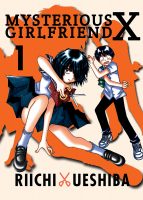 Mysterious Girlfriend X, Omnibus 1 (equivalent to Volumes 1-2) by Riichi Ueshiba. I had already heard a fair amount about Mysterious Girlfriend X before reading the first omnibus, but I wasn’t at all anticipating how surprisingly charming the series would be. Ueshiba’s illustrations can actually be pretty cute, too. That being said, Mysterious Girlfriend X is an incredibly weird manga and many people won’t be able to get past the drool and literal swapping of spit around which much of the story revolves. Akira Tsubaki is a fairly normal high school student but his first girlfriend, the newly transferred Mikoto Urabe, most definitely is not. If she is destined to have a close bond with someone, she is able to convey her feelings to them through her drool and she can likewise understand their feelings from their drool. She’s also phenomenally talented when it comes to using scissors, either artistically or in self-defense, and she always keeps a pair tucked away in her panties. Much about Urabe unknown, but after tasting her drool, Tsubaki can’t seem to help but fall in love with her. In general, Mysterious Girlfriend X tends to be somewhat episodic in nature although Tsubaki and Urabe’s strangely heartwarming relationship can be seen to very slowly progress over the course of the first omnibus.
Mysterious Girlfriend X, Omnibus 1 (equivalent to Volumes 1-2) by Riichi Ueshiba. I had already heard a fair amount about Mysterious Girlfriend X before reading the first omnibus, but I wasn’t at all anticipating how surprisingly charming the series would be. Ueshiba’s illustrations can actually be pretty cute, too. That being said, Mysterious Girlfriend X is an incredibly weird manga and many people won’t be able to get past the drool and literal swapping of spit around which much of the story revolves. Akira Tsubaki is a fairly normal high school student but his first girlfriend, the newly transferred Mikoto Urabe, most definitely is not. If she is destined to have a close bond with someone, she is able to convey her feelings to them through her drool and she can likewise understand their feelings from their drool. She’s also phenomenally talented when it comes to using scissors, either artistically or in self-defense, and she always keeps a pair tucked away in her panties. Much about Urabe unknown, but after tasting her drool, Tsubaki can’t seem to help but fall in love with her. In general, Mysterious Girlfriend X tends to be somewhat episodic in nature although Tsubaki and Urabe’s strangely heartwarming relationship can be seen to very slowly progress over the course of the first omnibus.

